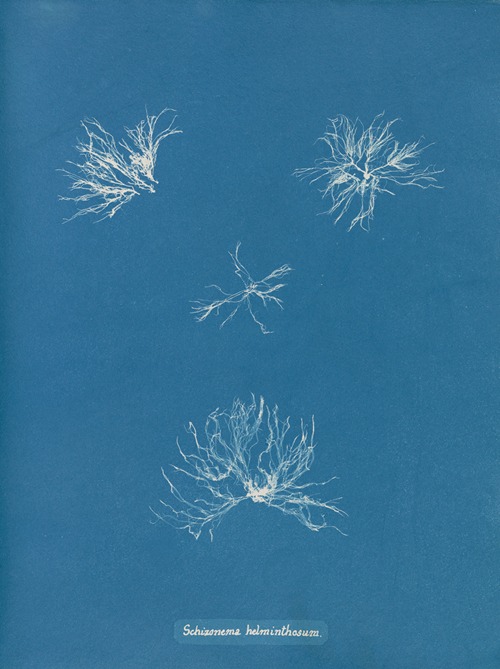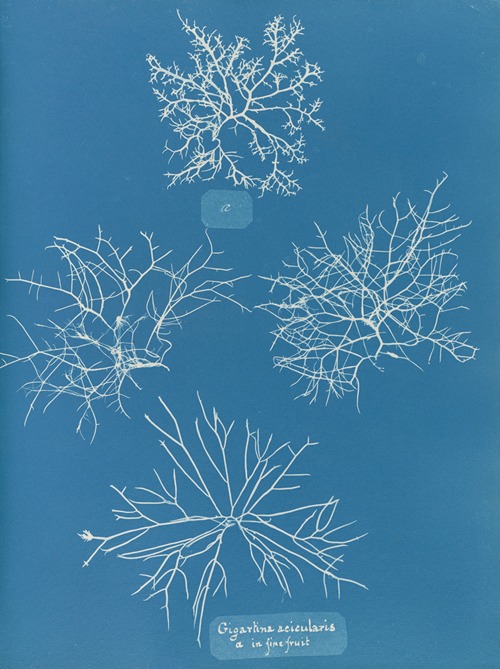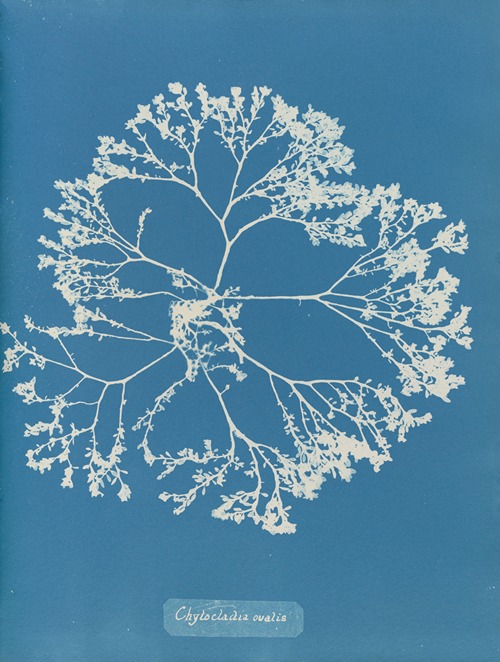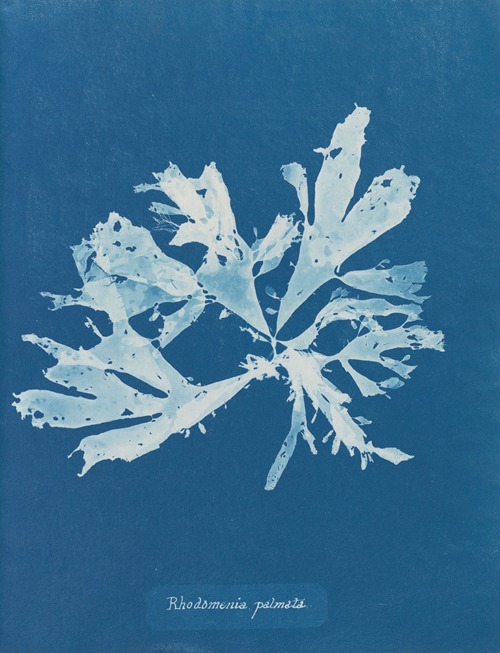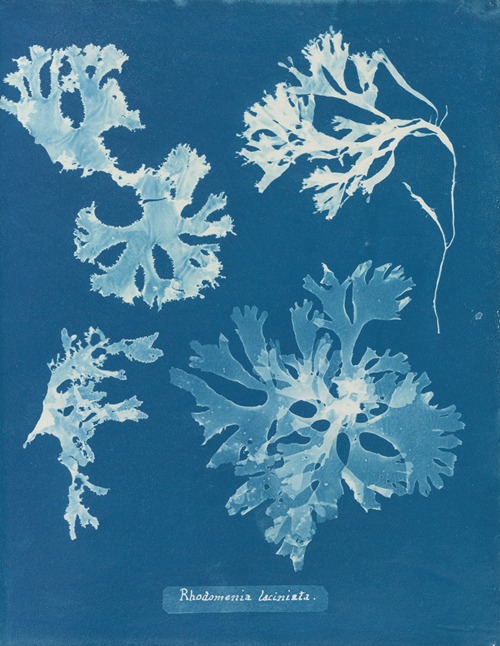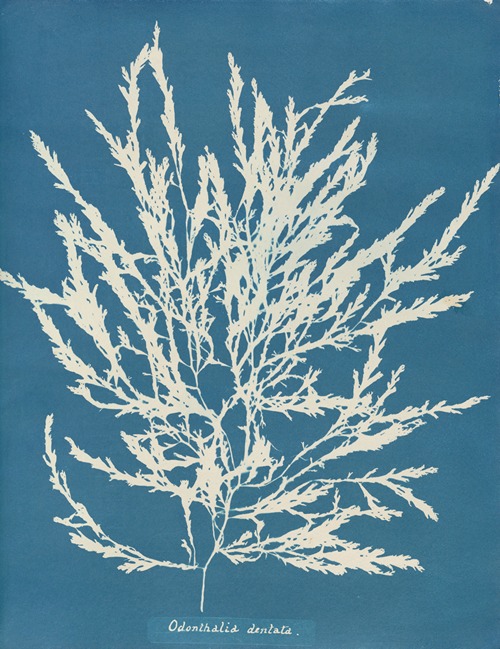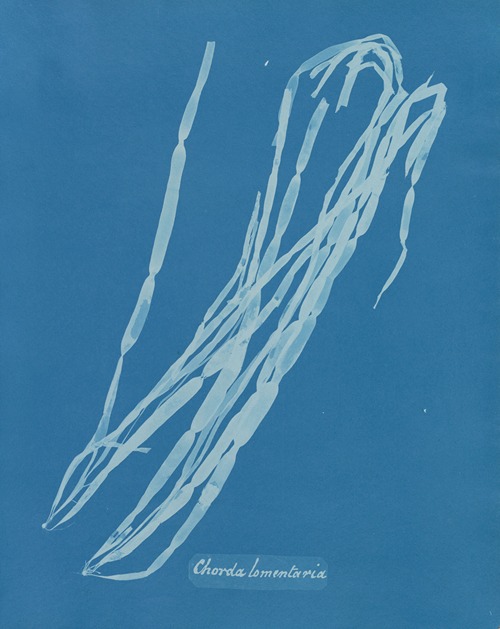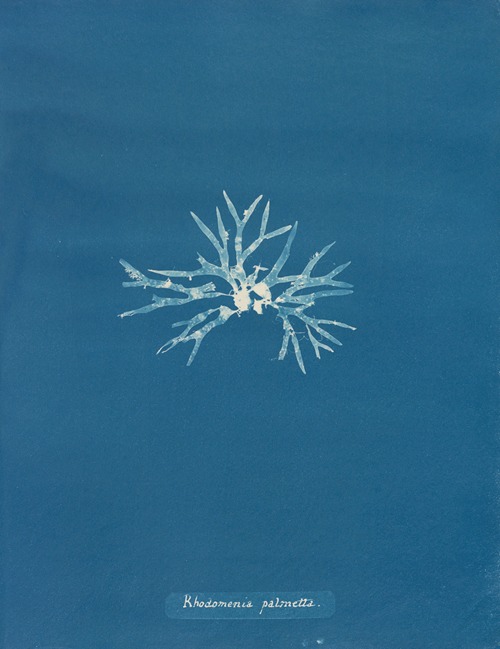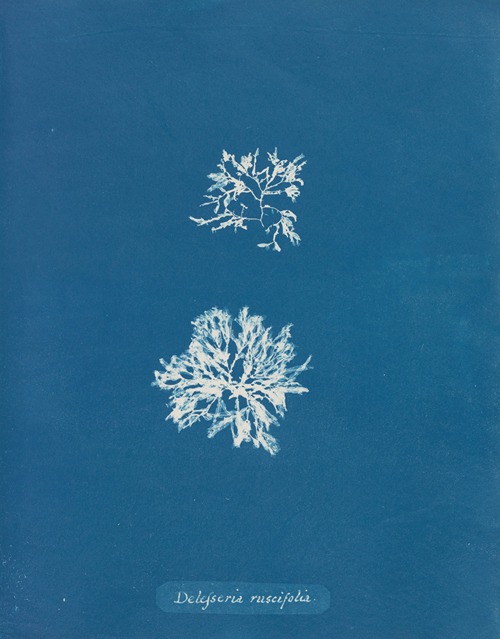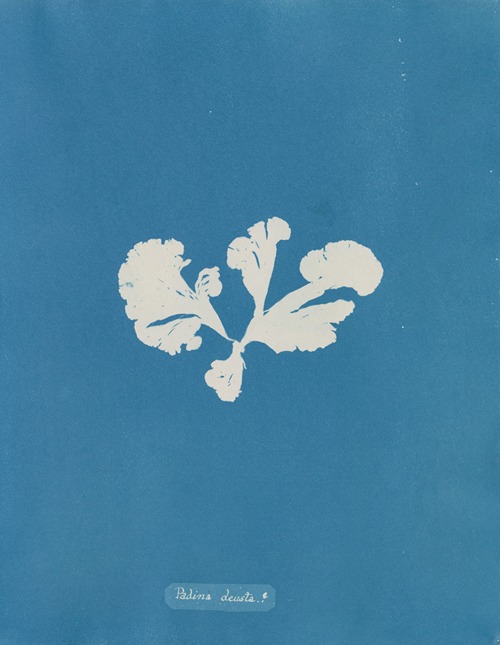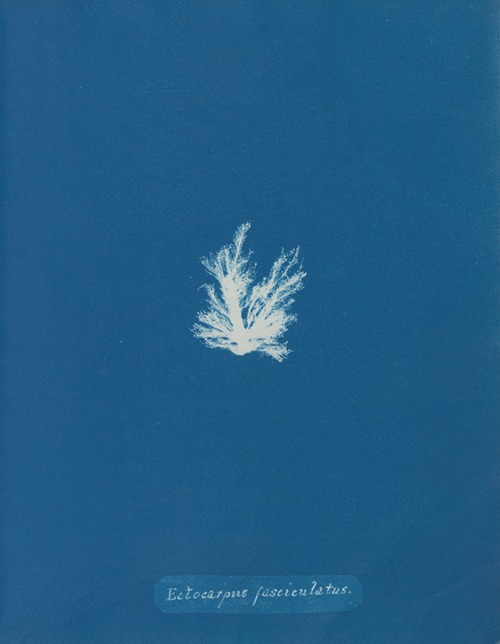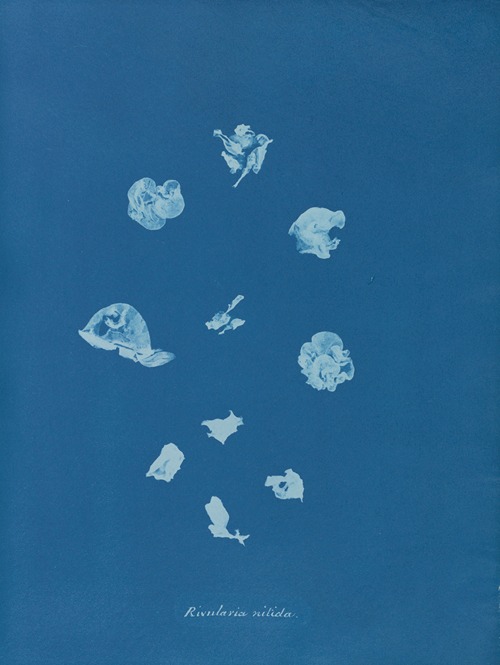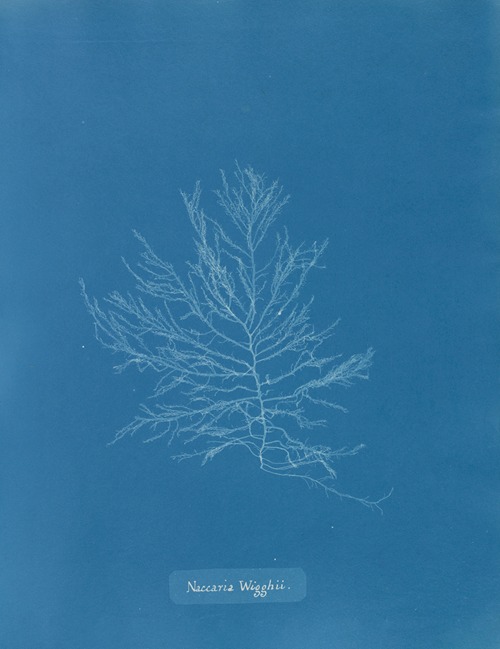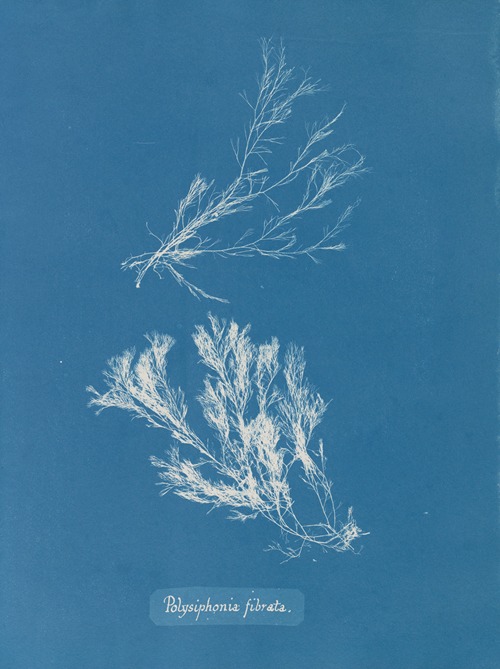
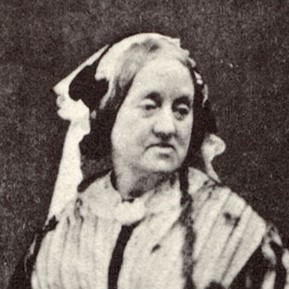
Anna Atkins (née Children) was an English botanist and photographer. She is often considered the first person to publish a book illustrated with photographic images. Some sources say that she was the first woman to create a photograph.
Atkins was born in Tonbridge, Kent, England in 1799. Her mother, Hester Anne Children, "didn't recover from the effects of childbirth" and died in 1800. Anna was close to her father John George Children, a renowned chemist, mineralogist, and zoologist. Anna "received an unusually scientific education for a woman of her time." Her detailed engravings of shells were used to illustrate her father's translation of Lamarck's Genera of Shells.
In 1825, she married John Pelly Atkins, a London West India merchant, later sheriff, and proponent of railways; during this same year, she moved to Halstead Place, the Atkins family home in Halstead, near Sevenoaks, Kent. They had no children. Atkins pursued her interests in botany by collecting dried plants, which were probably used as photograms later. She was elected a member of the London Botanical Society in 1839.
John George Children and John Pelly Atkins were friends of William Henry Fox Talbot. Anna Atkins learned directly from Talbot about two of his inventions related to photography: the "photogenic drawing" technique (in which an object is placed on light-sensitized paper and exposed to the sun to produce an image) and calotypes.
Atkins was known to have had access to a camera by 1841. Some sources say that Atkins was the first female photographer, while others attribute this title to Constance Fox Talbot. As no camera-based photographs by Anna Atkins, nor photographs by Constance Talbot, survive, the issue may never be resolved.
Sir John Herschel, a friend of Atkins and Children, invented the cyanotype photographic process in 1842. Within a year, Atkins applied the process to algae (specifically, seaweed) by making cyanotype photograms that were contact printed "by placing the unmounted dried-algae original directly on the cyanotype paper".
Atkins self-published her photograms in the first installment of Photographs of British Algae: Cyanotype Impressions in October 1843. She planned to provide illustrations to William Henry Harvey's A Manual of British Algae which had been published in 1841. Although privately published, with a limited number of copies, and with handwritten text, Photographs of British Algae: Cyanotype Impressions is considered the first book illustrated with photographic images.
Eight months later, in June 1844, the first fascicle of William Henry Fox Talbot's The Pencil of Nature was released; that book was the "first photographically illustrated book to be commercially published" or "the first commercially published book illustrated with photographs".
Atkins produced a total of three volumes of Photographs of British Algae: Cyanotype Impressions between 1843 and 1853. Only 17 copies of the book are known to exist, in various states of completeness.
In 2018, the New York Public Library opened an exhibition on Atkins' life and work, featuring various versions of Photographs of British Algae.
In addition to Photographs of British Algae, Atkins published five fictional novels between 1852 and 1863. These included The Perils of Fashion, Murder will Out: a story of real life, and A Page from the Peerage.
Atkins retained the algae, ferns and other plants that she used in her work and in 1865 donated the collection to the British Museum.
She died at Halstead Place in 1871 of "paralysis, rheumatism, and exhaustion" at the age of 72.
